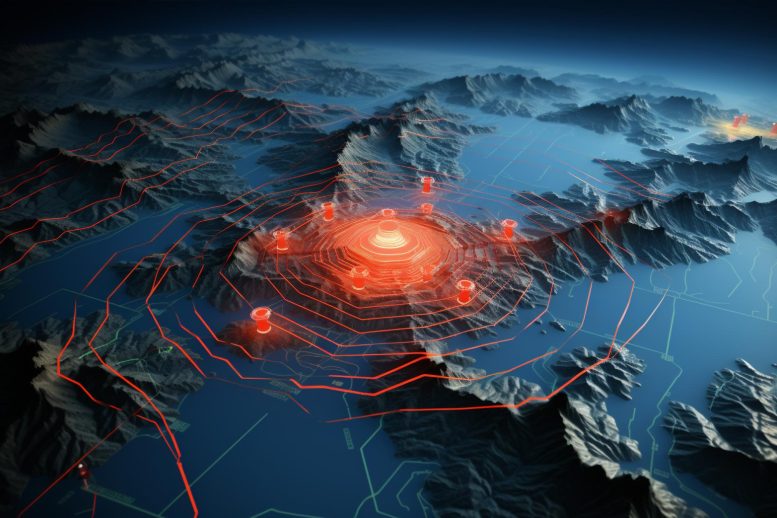
A systematic global analysis of GPS time-series data from nearly 100 large earthquakes suggests the existence of a precursory phase of fault slip that occurs about two hours before seismic rupture.
The analysis of Global Positioning System (GPS) time-series data from nearly 100 large earthquakes worldwide has unveiled evidence for a precursory phase of fault slip, which occurs approximately two hours before seismic rupture.
In a related Perspective, Roland Bürgmann writes, “If it can be confirmed that earthquake nucleation often involves an hours-long precursory phase, and the means can be developed to reliably measure it, a precursor warning could be issued.”
The quest to predict large earthquakes is a longstanding, yet elusive goal.
The Challenge of Short-term Earthquake Prediction
Short-term earthquake prediction, which involves issuing a warning anywhere from minutes to months before a quake, depends on the presence of a clear and observable geophysical precursor signal. Prior retrospective studies have proposed that a slow aseismic slip can be seen in faults ahead of the main shock, serving as a possible precursor. However, the connection between these observations and seismic ruptures remains unclear. This uncertainty arises as these observations do not directly precede an event and often occur without an ensuing earthquake, leaving the existence of a precise precursory signal for predicting large earthquakes in question.
A Global Search for Precursory Fault Slip
In this research, Quentin Bletery and Jean-Mathieu Nocquet present a comprehensive global search for short-term precursory fault slip before large earthquakes. Utilizing global high-rate GPS time-series data from 3,026 geodetic stations worldwide, Bletery and Noquet assessed fault displacement up to two hours before 90 different earthquakes of magnitude 7 and above. The statistical analysis of this data disclosed a subtle signal, aligning with a period of exponential acceleration of fault slip near the earthquake’s hypocenter, starting roughly two hours before the rupture.
Significance and Limitations of the Study
According to the authors, these findings suggest that many large earthquakes initiate with a precursory phase of slip, or the observations may represent the concluding part of a longer and more challenging to measure process of precursory slip. Despite presenting evidence of a precursory signal preceding large earthquakes, Bletery and Noquet caution that the current earthquake monitoring instruments lack the necessary coverage and precision to detect or monitor for precursory slip at the scale of individual earthquakes.
Bürgmann writes, “Although the results of Bletery and Nocquet suggest that there may indeed be an hours-long precursory phase, it is not clear whether such slow-slip accelerations are distinctly associated with large earthquakes or whether they could ever be measured for individual events with the accuracy needed to provide a useful warning.”
Reference: “The precursory phase of large earthquakes” by Quentin Bletery and Jean-Mathieu Nocquet, 20 July 2023, Science.
DOI: 10.1126/science.adg2565
Never miss a breakthrough: Join the SciTechDaily newsletter.
1 Comment
Even seismic lab sensitive instruments can’t predict, if early seismic activity signal is a major earthquake sign or minor. GPS device is not sensitive enough to indicate weak early signals.